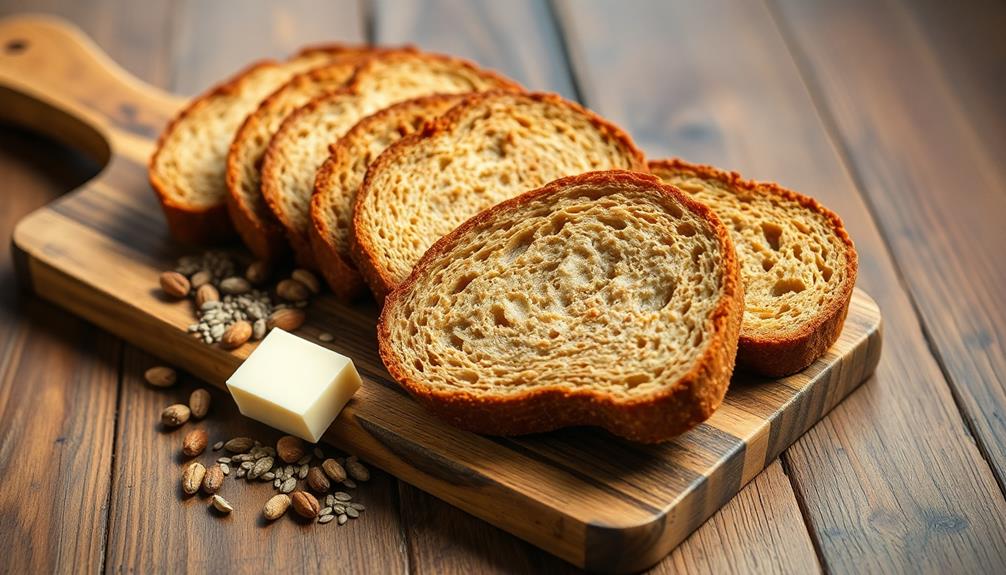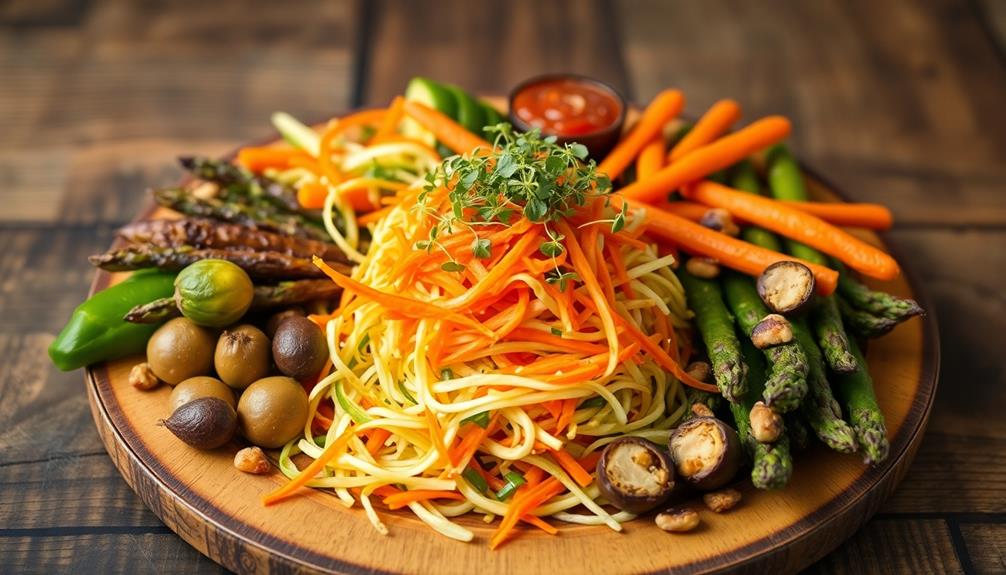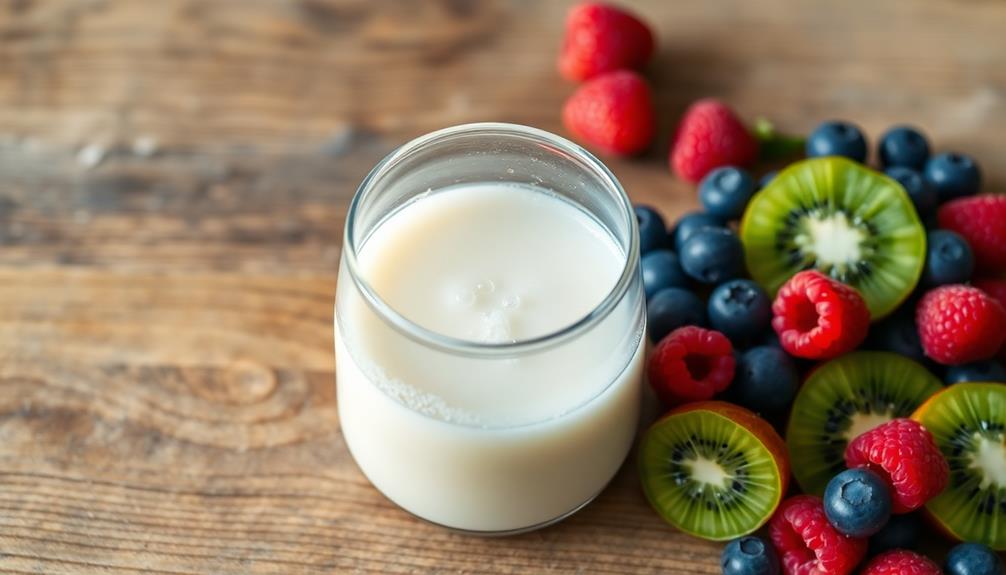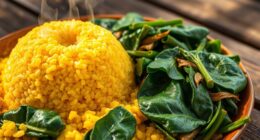Transitioning to a dairy-free lifestyle is an exciting journey of discovery. You'll find a diverse array of delicious plant-based milks, cheeses, and yogurts that can seamlessly replace traditional dairy products. Start by gathering your favorite milk alternatives, like creamy oat or nutty almond milk. Then, substitute these versatile ingredients when cooking and baking. Mastering dairy-free recipes will expand your culinary skills, and you'll enjoy the health and environmental benefits of a plant-based diet. With some patience and experimentation, you'll uncover new favorite snacks and dishes. Keep reading to dive deeper into the world of dairy-free living.
Key Takeaways
- Understand the history and motivations behind the dairy-free movement, including health, environmental, and dietary concerns.
- Explore the diverse range of plant-based milk alternatives, such as almond, oat, cashew, and soy, and identify preferred options based on flavor, texture, and nutritional content.
- Discover the health and environmental benefits of a dairy-free diet, including improved digestion, reduced cholesterol levels, and lower environmental impact.
- Learn the step-by-step process of substituting dairy products with plant-based alternatives in cooking, including recipes and preparation methods.
- Access support and resources, such as online communities, recipe blogs, and workshops, to enhance your knowledge and skills in transitioning to a dairy-free lifestyle.
History
The dairy-free movement has a fascinating history, rooted in both health and ethical concerns. In the late 19th century, some people began to question the safety and environmental impact of dairy products. By the 1900s, dairy-free alternatives like almond and soy milk started gaining popularity.
During the 1960s and 70s, the vegetarian and animal rights movements further fueled the desire for dairy-free options.
Today, the reasons for going dairy-free are more diverse than ever. Some seek to address lactose intolerance or allergies, while others aim to reduce their environmental footprint or avoid animal products.
Whatever your motivation, the dairy-free landscape has grown exponentially, offering a wide array of plant-based milks, cheeses, yogurts, and more. As you embark on your dairy-free journey, you'll discover a vibrant community of like-minded individuals and a wealth of delicious, nutritious alternatives to explore.
Recipe
Moving towards a dairy-free lifestyle can be an exciting journey filled with delicious discoveries. Whether you're exploring plant-based alternatives or simply looking to reduce your dairy intake, this recipe for a creamy, dairy-free dish is a great place to start.
It's important to ensure that your meals are balanced and nutritious, as a well-planned diet can contribute to overall health and well-being, including aspects like hair health, which may be affected by nutrient deficiencies in poorly planned diets essential nutrients for hair health.
Embracing dairy-free cooking opens up a world of culinary possibilities, allowing you to experiment with a variety of flavorful ingredients and create nourishing meals that cater to your dietary needs.
In this recipe, we'll showcase how you can achieve a rich, satisfying texture without relying on traditional dairy products.
- 1 cup unsweetened almond milk
- 1/2 cup cashews, soaked in water for at least 4 hours or overnight
- 2 tablespoons nutritional yeast
- 1 teaspoon garlic powder
- 1 teaspoon onion powder
- 1/2 teaspoon salt
- 1/4 teaspoon black pepper
- 2 cups cooked pasta of your choice
To prepare the dish, first drain and rinse the soaked cashews. In a high-speed blender, combine the almond milk, drained cashews, nutritional yeast, garlic powder, onion powder, salt, and black pepper.
Blend until the mixture is smooth and creamy. Toss the cooked pasta with the dairy-free cashew sauce, ensuring the pasta is evenly coated. Serve hot and enjoy the comforting, dairy-free goodness.
Cooking Steps
Gather your preferred plant-based milk alternatives like almond, soy, or oat milk. Herbal teas can be a great addition to your dairy-free lifestyle, providing various flavors and health benefits that complement your meals, such as supporting immune function.
Then, find suitable substitutes for any dairy ingredients the recipe calls for, such as butter, cheese, or yogurt.
Next, prepare your plant-based milk mixture by following the recipe instructions. Blend the ingredients thoroughly, chill the milk, and serve it up – it's that simple!
Step 1. Gather Plant-Based Milk Alternatives

Selecting the right plant-based milk alternatives is crucial for dairy-free cooking and baking. You'll find an array of options, from classic almond and soy milk to trendy oat and cashew varieties.
When choosing, consider the flavor profile and how it might complement your recipe. Almond milk has a light, nutty taste, while soy milk is slightly richer and more versatile. Oat milk creates a creamy texture, and cashew milk adds a subtle sweetness.
Additionally, some plant-based milks, like almond and soy, may offer health benefits that enhance your overall wellness. Be mindful of any allergies or intolerances, and read labels carefully.
For baking, opt for unsweetened, unflavored milks to avoid interfering with your recipe. Start with smaller amounts and adjust as needed to achieve the right consistency.
Experiment to find your favorite – you may discover unexpected pairings that enhance your dairy-free dishes. With a little trial and error, you'll be whipping up delicious plant-based creations in no time.
Step 2. Substitute Ingredients for Dairy Products
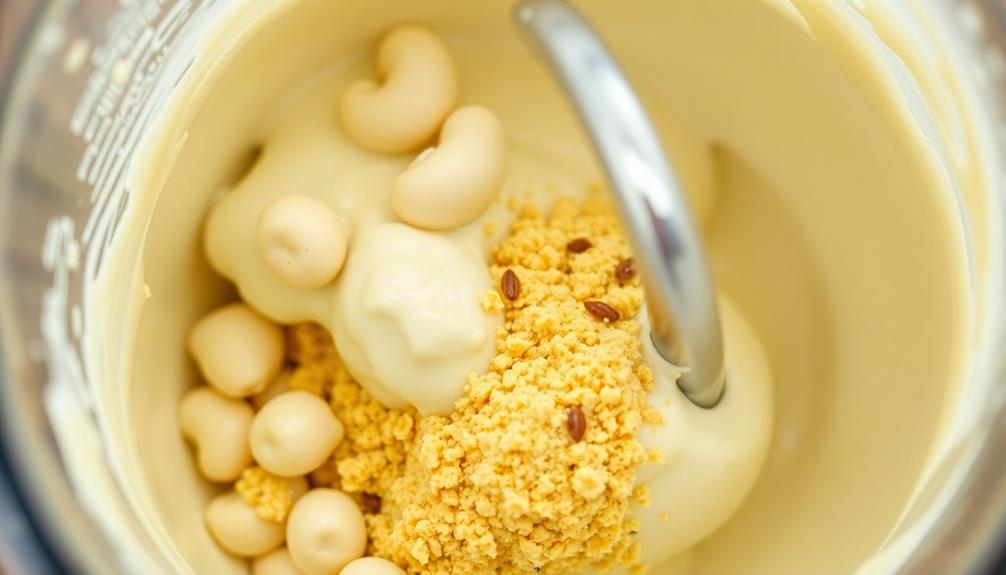
With your selection of plant-based milk alternatives in hand, you're ready to start substituting them for dairy products in your cooking and baking. When a recipe calls for cow's milk, simply swap it out for your preferred plant-based milk. Almond, oat, and soy milk work well in most dishes.
Be mindful that different milks have varying levels of thickness and richness, so you may need to adjust the amount used. For creamy recipes like sauces and soups, reach for full-fat coconut milk or a thicker oat milk.
When baking, choose a neutral-flavored milk like unsweetened almond or soy to avoid interfering with the other ingredients. You can also substitute plain, unsweetened plant-based yogurt for dairy yogurt, and vegan butter or coconut oil for butter.
Experiment to find the best swaps for your favorite dairy-based dishes. With a little practice, you'll be whipping up delicious, dairy-free meals in no time.
Step 3. Prepare Plant-Based Milk Mixture
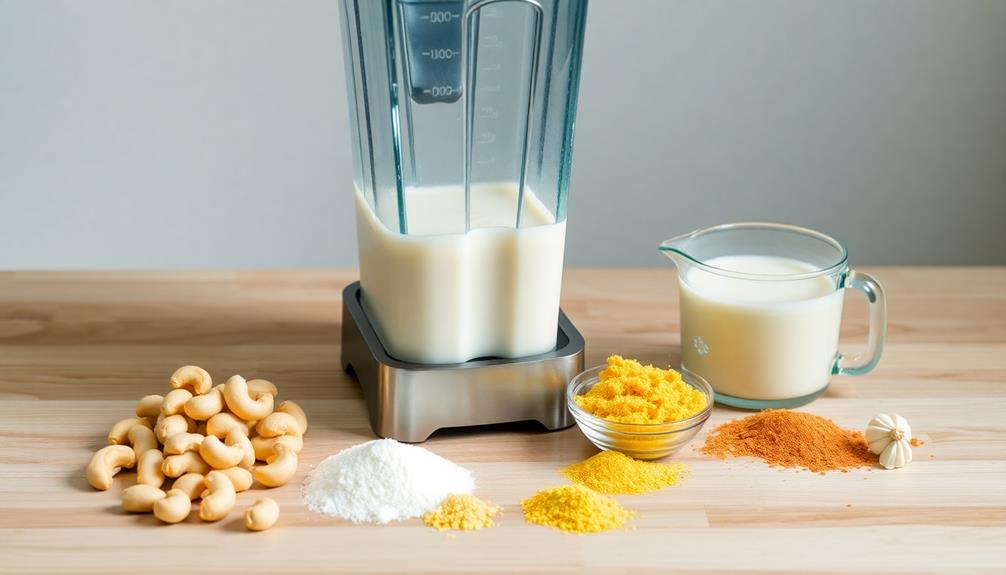
When preparing your plant-based milk mixture, you'll want to choose the right ratio of ingredients to achieve the desired consistency and flavor.
Start by selecting your base ingredient, such as almonds, cashews, oats, or soy. You'll typically use about 1 cup of raw nuts or 1/2 cup of oats per 4 cups of water. Soak the nuts or oats for a few hours or overnight to soften them, then drain and rinse.
Next, add the soaked ingredients to a blender with the water and blend on high speed until smooth and creamy. For a creamier texture, you can use less water.
Adjust the sweetness by adding a bit of maple syrup, honey, or vanilla extract to taste. Strain the milk through a nut milk bag or fine mesh strainer to remove any pulp or solids.
Store the plant-based milk in the fridge for up to 5 days. Enjoy your homemade dairy-free milk in smoothies, cereal, baking, and more!
Step 4. Blend Plant-Based Milk Ingredients
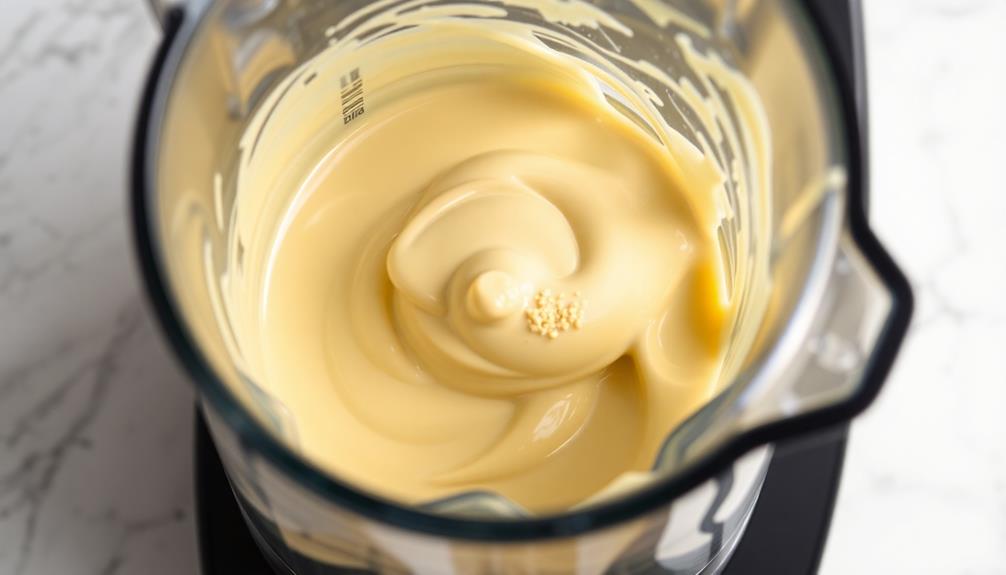
Blend the soaked nuts or oats with the water in a high-powered blender until you achieve a smooth, creamy consistency. This process is the foundation for creating your plant-based milk.
Depending on the type of milk you're making, you'll want to blend for 1-2 minutes, stopping to scrape down the sides as needed. The longer you blend, the smoother and more uniform the texture will be.
Once blended, you'll need to strain the milk through a nut milk bag or cheesecloth to remove any remaining pulp or fiber. This step is crucial for achieving a silky, drinkable milk. Don't skip it!
Gather the edges of the cloth or bag and gently squeeze to extract as much liquid as possible. The leftover pulp can be saved and used in baking or composted.
Step 5. Chill and Serve Plant-Based Milk
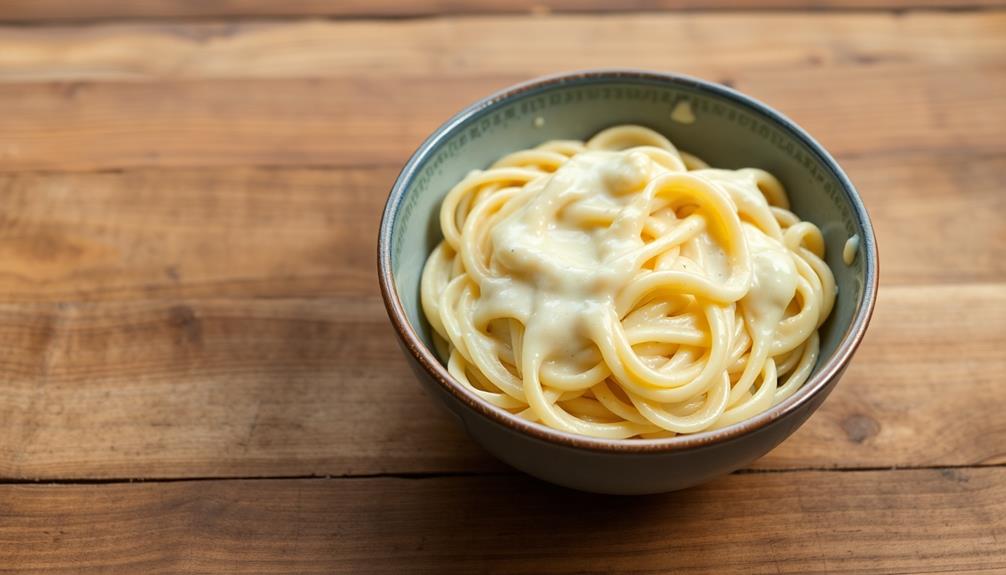
After straining the blended plant-based ingredients, chill the milk in the refrigerator for at least 30 minutes. This helps the flavors meld and the milk thicken to your desired consistency.
Once chilled, give it a good stir before pouring into your favorite glass or container. You can even experiment with adding a touch of vanilla, a pinch of cinnamon, or a drizzle of maple syrup for extra flavor.
When you're ready to serve, make sure to shake or stir the milk well, as the ingredients can separate during refrigeration.
Pour and enjoy your creamy, dairy-free delight! The chilled plant-based milk is perfect for drinking on its own, adding to cereal, or using in your favorite recipes. For a refreshing treat, try blending the plant-based milk with frozen fruits for a smoothie or pour it over dairyfree ice cream options for a decadent dessert. With so many possibilities, this creamy, dairy-free delight is sure to become a staple in your kitchen. Whether you adhere to a dairy-free diet or just love the taste of almonds, this versatile milk alternative is a delicious and nutritious choice.
Play around with different plant bases to find the flavor and texture you love most. Almond, oat, and cashew milks are all great options to try.
Final Thoughts
As you embark on your dairy-free journey, remember that it's a process of discovery and adaptation.
Don't get discouraged if it takes time to find your new favorite plant-based milks and cheeses. Experiment with different options until you land on the ones that work best for your taste buds and dietary needs.
Along the way, be patient with yourself. Changing lifelong habits isn't easy, but it's worth it for your health and the environment.
Celebrate small victories, like mastering a delicious dairy-free recipe or finding a new go-to snack. With a little creativity and an open mind, you'll be a dairy-free pro in no time.
Frequently Asked Questions
What Are the Health Benefits of a Dairy-Free Diet?
A dairy-free diet can provide numerous health benefits. It may reduce inflammation, improve digestion, and lower the risk of certain chronic conditions like heart disease and type 2 diabetes. Plus, it's often a more sustainable and environmentally-friendly choice.
How Can I Ensure I Get Enough Calcium Without Dairy?
You can get enough calcium without dairy by incorporating calcium-rich plant-based foods like leafy greens, tofu, fortified plant-based milks, nuts, and beans into your diet. Speak with a healthcare professional to ensure you meet your calcium needs.
Are There Any Dairy-Free Substitutes for Cheese and Yogurt?
You can find plenty of dairy-free substitutes for cheese and yogurt. Look for plant-based options made from nuts, soy, or coconut. These alternatives can provide the same texture and flavor without the dairy. Many grocery stores now offer a wide variety of dairyfree cheese alternatives, making it easier than ever to accommodate dietary preferences or restrictions. Whether you’re vegan, lactose intolerant, or simply looking to cut back on dairy, these options are a great way to enjoy your favorite dishes without sacrificing flavor. Plus, many dairyfree cheese alternatives are fortified with essential nutrients like calcium and vitamin D, so you’re not missing out on the benefits traditionally associated with dairy products.
Is a Dairy-Free Diet More Expensive Than a Regular Diet?
While a dairy-free diet can be more expensive initially, you can find affordable options and save money by cooking more meals at home. Explore plant-based alternatives and take advantage of sales to make the transition more budget-friendly.
How Do I Transition to a Dairy-Free Diet Gradually?
You can transition to a dairy-free diet gradually by slowly removing dairy products from your diet, trying plant-based alternatives, and exploring new dairy-free recipes. Start with the easiest swaps, like switching to non-dairy milk.

